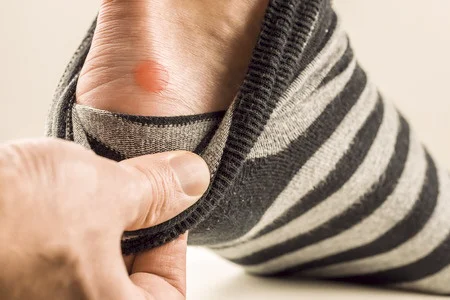Table of Contents
Introduction - Blisters
A blister is a pocket of fluid protected by the overlying layer of skin. Blisters on the feet are usually caused by friction and can make wearing shoes and most activities painful. Blisters can also be caused by an insect bite, a skin burn, infection, sunburn, an allergic reaction or trauma.
Often, blisters on the feet result from wearing shoes that fit poorly. If the footwear is too tight or too loose, your feet can rub against the shoes causing friction. In this case, fluid will build up beneath the skin. Excessive moisture such as perspiration can also cause blisters, especially for runners in warm weather.
Blisters - Symptoms
If you are experiencing skin irritation when wearing shoes, look for raised bumps of skin where the foot is in contact with the shoes. These will be fairly soft because they are filled with liquid.
Treating Blisters
The best treatment for a blister is to leave it intact to let new skin grow underneath. Even if it bursts, leave the covering skin in place as it will help protect the area from infection. Just cover the blister with an adhesive bandage and avoid shoes that rub against the area.
If your blister does not heal within a few days or if you observe any signs of infection, visit your podiatrist for expert care. The doctor will use a sterile needle to drain the blister and then apply antibiotic ointment. If the area is infected, oral antibiotics may also be prescribed.
Preventing Blisters
If friction against your shoes has caused a blister, invest in shoes that are the right size and that fit well. Adding an insole to the shoe can reduce friction with extra padding.
Athletes should focus on keeping the feet dry with foot powder or with moisture-wicking socks.



